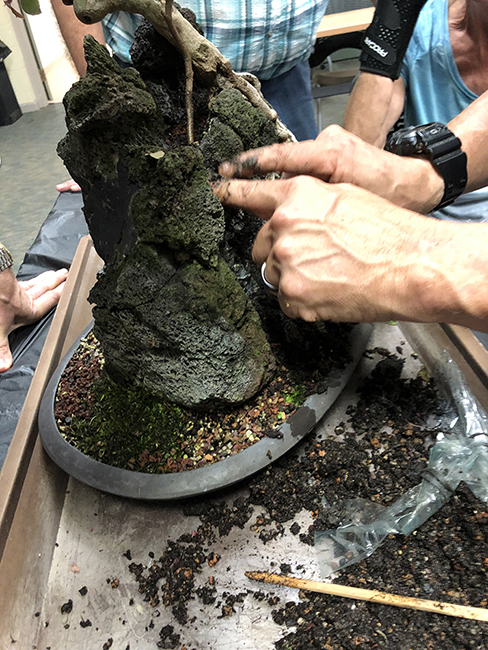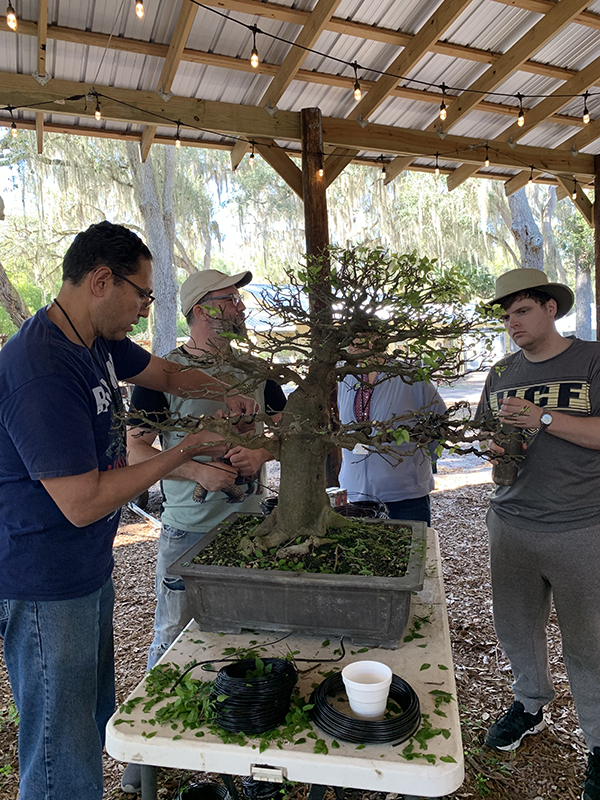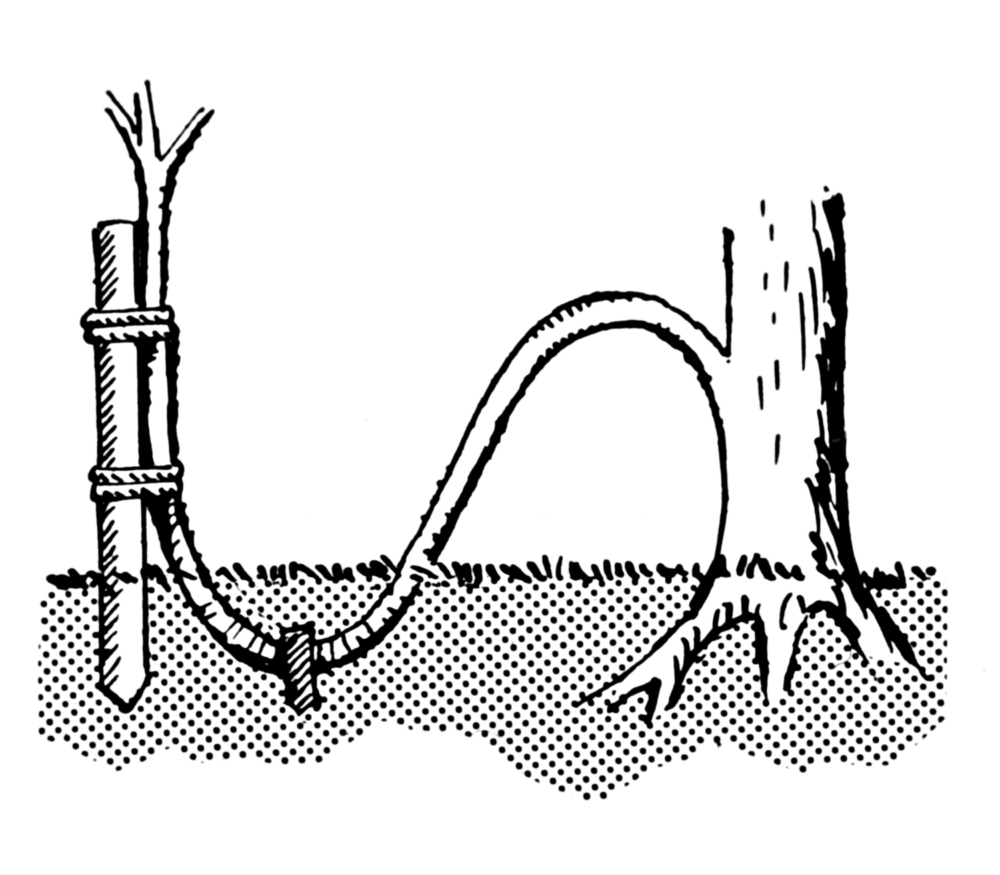
The main difference between Japanese bonsai and saikei is that while a bonsai may contain a rock or more, they are mainly to accent the tree, i.e., root over rock style. The emphasis on bonsai is the tree, with as little accessories and adornment as possible. If you want to add more trees and some rocks and make a landscape, it is then called a saikei.
The Art of Saikei and Penjing is the Japanese “Pot-Landscape” and Chinese “Pot-scenery” are versions of a miniature landscape. Saikei (Japanese) translates ‘pot -landscape,’ and penjing (Chinese) translates ‘pot – scenery.’
The main difference between a saikei and a penjing is that while a saikei may contain rocks and possibly a stream or path, that is about the extent of it, and all the trees should be of the same variety. Though there is scenery, the focus is still on the trees. Chinese thought allows much more freedom in the expression of the landscape in a penjing. They don’t mind mixing different types of trees, adding a stream, a path, miniature people, animals, and structures. The emphasis is, therefore, on the scenery instead of the trees. The saikei could be said to be more ‘formal’ than a penjing.
Common elements of both saikei and penjing include items such as trees in saikei, and penjing can be much more immature and less developed than in a bonsai. Also, there is almost always a division in the scene, either a path or stream, a valley, or natural rock wall that separates the composition into at least two unequal parts. White sand can be used to represent water, fine bark could be a path, and a variety of mosses and low-growing accent plants can be used to enhance the scene that you are trying to create. The trays for saikei/penjing should be large and very shallow. Slabs are often used also.
When preparing to create your saikei/ penjing, have in mind first what ‘mood’ or ‘feeling’ you want to achieve with the planting. Will it be a mountainous terrain, or a woods scene? Will it be a thicket or more of a pasture or rolling hillside scene? Aspects to consider include: Consistency – group same type trees together. Perhaps have everything leaning in the same direction. Have the same types of rocks together. Balance – some bonsai rules still apply; odd number trees grouped together; however, asymmetrical triangle groupings are not as important in a landscape. The main goal is to make it look natural, not contrived. Off-centered groupings and divisions of scenery still apply. Scale – Keep things on the same scale, where the arrangement looks believable. Don’t put trees of the same height together. Create an illusion of depth by placing the smaller trees further away from the viewer’s eye. Harmony – Same types of trees grouped together. The landscape should be inviting. Components should compliment each other. Empty spaces can offset a crowded area of trees. Interest – The landscape should tell a story. It should lead the viewer to either excitement or relaxation and perhaps pique their interest with a path or stream that disappears around a curve. It should evoke emotions other than boredom.
Tray Landscapes
Tray Landscapes are not considered to be bonsai, but are a related art that generally follows the established bonsai practices and techniques. While bonsai normally portray a single tree, or group of trees, tray landscapes portray a wider expanse and include the other features that represent an overall habitat. They provide a way to use “less than perfect” material. A stone or an adjacent tree can disguise defects like an absence of branches on one side. Tray landscapes can be a permanent planting, or provide a temporary display for younger material which can be enjoyed while the trees mature and are developed to be removed as individual bonsai later. The use of immature plant material makes tray landscapes a good project for beginners. For the more experienced, trees with substantial trunks look magnificent in a landscape setting even though they may make mediocre bonsai. A landscape can exponentially increase the visual impact of a tree. There are three styles of tray landscapes based on differing Asian cultural sensibilities, traditions, and religions.
Cultural Styles: Saikei, Penjing, and Hon Non Bo
Saikei (Japan) – A group planting based on the Japanese style of bonsai. Saikei differs from other bonsai group plantings, such as forest or clump style, by the extensive use of stones, gravel, and sand. Saikei was developed after World War II by Toshlo Kawamoto as a way to use relatively young trees, planted in combination with stones to suggest mountains or rugged shorelines, and gravel or sand suggesting water. As with bonsai, the Japanese sensibilities do not allow the use of ornaments. Interestingly, saikei is not commonly practiced in Japan.
Penjing (China) – Penjing is commonly thought of in the west as a tray landscape, but is actually the Chinese style of bonsai. Landscape penjing are similar to saikei but are less restrictive in style and frequently include ornaments such as tiny buildings, bridges, and animal or people figurines. Landscape penjing are often assembled on a white marble slab (which is frequently used to represent water), but may also use shallow pottery containers, or stone slabs.
Hon Non Bo (Vietnam) – Hon non bo is similar to penjing, but normally represents a mountain or island landscape, and is normally displayed in a container of water. Hon non bo are frequently large, permanent features of Vietnamese entries or courtyards.
















